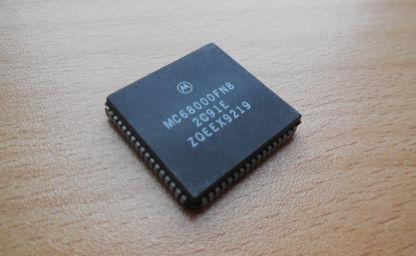Exploring the Amiga - Part 3
By Leonardo Giordani - Updated on
Exec and the vector table¶
The Exec library is the base library of the Amiga system. This library is loaded in memory at boot time, and it is always open and available. Once loaded, it has the same structure of any other library, that is a prefix containing the jump table in reverse order, then the actual code.
The trick here is that Exec is the library used to load in memory other libraries, so the function that creates the structure in memory of a given library is contained here. To install Exec in memory, thus, we need to use a function which is part of the library itself.
This is one of the powers of the Assembly language. The property of treating the code as if it was pure data is called homoiconicity, and is something that can be rarely found in other languages. Lisp is a good example of a higher level homoiconic language.
Back to our vector table, we have to find a way to use the Exec library to install in memory the Exec library itself. The concept is not that complex, actually. The final structure we are trying to achieve is something like this:
vectors:
function1-vectors
function2-vectors
function3-vectors
function1:
code
[...]
function2:
code
[...]
function3:
code
[...]
In this situation we have 3 functions defined at the addresses function1, function2, and function3. Somewhere in the code at the address vectors there is a plain list that contains the addresses of those functions. Since the code can be relocated this list contains offsets relative to the vectors table itself. So the first element of the table will be function1-vectors, that is the subtraction between the two addresses, and so on.
For example we might have
0042 0122
0044 01b8
0046 02d1
[...]
0164 code of function1
[...]
01fa code of function2
[...]
0313 code of function3
[...]
Where the entry of the table are 0x164-0x42 = 0x122, 0x1fa-0x42 = 0x1b8, and 0x313-0x42 = 0x2d1.
The vectors table, thus, is the source from which we can calculate the jump table. The code to perform this, however, is contained in one of the functions itself, let's assume it's function number 2
function1:
code
[...]
function2:
for each address of <table> create
a jump table entry relative to <start>
function3:
code
[...]
vectors:
function1-vectors
function2-vectors
function3-vectors
As you can see the function at function2 (in this example) depends on a <table> and a <start> parameters which will be contained in some register. At this point, since the address function2 is known, there can be some code that runs the function on the table contained in the code itself
setup:
run <function2> on <vectors_offset> and <setup>
function1:
code
[...]
function2:
for each address of the vector table create
a jump table entry relative to START
function3:
code
[...]
vectors:
function1-vectors
function2-vectors
function3-vectors
where <vectors_offset> is a hardcoded offset (as the displacement of vectors relative to setup is known) and setup is the effective address that the setup routine has at runtime.
This mechanism creates then a library that can install other libraries through a given function, but that can at the same time install itself.
The Kickstart vector table¶
An actual example of the vector table mechanism can be found in the Kickstart code. Kickstart is the BIOS of the Amiga system, and is loaded at boot time either from disk (Amiga 1000 and some Amiga 3000) or from a ROM.
The code of Kickstart 1.3 can be found here and you can easily disassemble it with vdasm
$ vda68k Kickstart1.3.rom > Kickstart1.3.asm
Inside this code we can see a practical implementation of the mechanism described above.
The mandatory disclaimer: to use the Amiga Kickstart ROM images you must own a license. (see the Resources section).
When you disassemble some binary code, however, you don't get some nice source code written in a high level language. Well, not with a simple disassembler like vdasm, anyway. What you get is the one to one interpretation of the binary values according to the processor's conventions, and this includes parts of the binary file that are pure data. The disassembler has no way to know if some binary number represents an instruction or a pure number. Moreover, there is no trace of the original labels used by the author(s) of the code, as they are lost in the translation to machine language, when they are converted to pure addresses.
The practice of understanding how a system works starting from the pure implementation is called "reversing", and personally I consider it one of the most fascinating tasks a programmer can face.
The purpose of the present investigation is to find the Kickstart 1.3 vector table, and with that to find the position and implementation of the Exec functions. Well, let's start.
Step 1
I know that MakeFunctions is used to create in memory the structure of Exec itself. So I know that somewhere that function is invoked on the code that I am studying.
Since one of the parameters of the MakeFunctions routine is the name of the library a good starting point might be a string containing exec.library (which is the standard name of this library in the Amiga system). Once I find that string I can look for a function call that uses its address as a parameter.
The byte sequence that represents that string (using ASCII) is 65 78 65 63 2E 6C 69 62 72 61 72 79. In Kickstart 1.3 the offset of this string is 0x00a8.
Remember that what you see in the disassembled code is not a string. The disassembler tries to convert everything into instructions, so you will find something like
000000a8: 6578 bcs.b 0x122
000000aa: 6563 bcs.b 0x10f
000000ac: 2e6c 6962 movea.l 0x6962(a4),sp
000000b0: 7261 moveq #0x61,d1
000000b2: 7279 moveq #0x79,d1
When looking for strings it's better to use a hexadecimal editor that can show and search in the ASCII representation of the binary code.

We know that Kickstart is loaded at address 0xfc0000 (Amiga System Programmer's Guide, page 67), so all the 16-bit addresses are relative to 0x00fc. The library name pointer is then 00fc 00a8.
Step 2
In the Amiga system all libraries have a specific structure when loaded in memory. Apart from the prefixed jump table, the library code itself is wrapped in a fixed structure that allows us to read and use it.
Libraries in memory are nodes of a linked list, so the dist thing we expect to find is the structure of the node itself. Then, inside the node, we expect to find the actual library structure.
The include file include_i/exec/nodes.i tells us that a standard linked list node has the following structure
STRUCTURE LN,0 ; List Node
APTR LN_SUCC ; Pointer to next (successor)
APTR LN_PRED ; Pointer to previous (predecessor)
UBYTE LN_TYPE
BYTE LN_PRI ; Priority, for sorting
APTR LN_NAME ; ID string, null terminated
LABEL LN_SIZE ; Note: word aligned
The two 32-bit pointers LN_SUCC and LN_PRED are created when the node is loaded in memory, so we need to look for the rest of the structure, namely 1 byte with LN_TYPE, 1 byte with LN_PRI and 4 bytes with LN_NAME. From the same file include_i/exec/nodes.i we know that the node type for a library is 09
NT_LIBRARY EQU 9
So the pattern we are looking for is 09XX 00fc 00a8, respectively the node type (09), an unknown priority (XX), and the library name pointer 00fc 00a8. We also know that the pattern is likely to be stored towards the beginning of the whole ROM, as one of the first things the library will do is to create its own structure in memory. This last assumption is not to be taken for granted, as the code could easily jump around, but it's a reasonable one.
In the Kickstart 1.3 code this pattern can be found at offset 0x030c.

If this is the correct position of the node structure, we expect to find just after it the structure of the library as described in the include file include_i/exec/libraries.i
STRUCTURE LIB,LN_SIZE
UBYTE LIB_FLAGS ; see below
UBYTE LIB_pad ; must be zero
UWORD LIB_NEGSIZE ; number of bytes before LIB
UWORD LIB_POSSIZE ; number of bytes after LIB
UWORD LIB_VERSION ; major
UWORD LIB_REVISION ; minor
APTR LIB_IDSTRING ; ASCII identification
ULONG LIB_SUM ; the system-calculated checksum
UWORD LIB_OPENCNT ; number of current opens
LABEL LIB_SIZE ; Warning: Size is not a longword multiple!
The binary code of Kickstart 1.3 from address 0xfc030c is indeed the following
0000030c: 09 ; LN_TYPE
0000030d: 00 ; LN_PRI
0000030e: 00fc 00a8 ; LN_NAME
00000312: 06 ; LIB_FLAGS
00000313: 00 ; LIB_pad
00000314: 0000 ; LIB_NEGSIZE
00000316: 024c ; LIB_POSSIZE
00000318: 0022 ; LIB_VERSION
0000031a: 0002 ; LIB_REVISION
0000031c: 00fc 0018 ; LIB_IDSTRING
00000320: 0000 0000 ; LIB_SUM
00000324: 0001 ; LIB_OPENCNT
From this I know that the version of exec contained in this Kickstart is 34 (0x22) revision 2 (0x02), and this is confirmed by the ID string at address 0xfc0018, which is exec 34.2 (28 Oct 1987).

Step 3
What we are really interested in, at this point, is where the address of this structure is mentioned in the code, as it will be used to create the library structure. Since the MakeFunctions routine will be invoked after creating the library structure, we can know from here where the former is defined.
The structure is at address 0x030c and we are looking for and instruction like lea 0x30c(pc),ax, where ax is one of the address registers a0-a7. Loading the address of a table in a register is the standard way to loop on the table to modify it or to copy the bytes somewhere. It was interesting to discover why this is the preferred way to do it
The 68000 does not allow you to execute a MOVE instruction with a destination relative to the program counter (PC). In the view of the 68000 designers, code should not patch itself. If you must change a table in the middle of code, you must point to it with an instruction like LEA TABLE(PC),An and then alter it through An. (Self-modifying code is especially bad for 68000 programs that may someday run on the 68020, because the 68020's instruction cache normally assumes that code is pure.
At address 0x0364 we find the following code
00000360: 43ee 0008 lea 0x8(a6),a1
00000364: 41fa ffa6 lea 0x30c(pc),a0
00000368: 700c moveq #0xc,d0
0000036a: 32d8 move.w (a0)+,(a1)+
0000036c: 51c8 fffc dbf d0,0x36a
which actually installs in memory the exec library. Let's analyse this code instruction by instruction.
Since the ExecBase address is contained in a6 (this is done previously in the code), that address is incremented by 8 and the result is copied into the a1 register. The 8 bytes leave space for the LN_SUCC and LN_PRED pointers. Then, the code loads the address of the table in a0.
The loop is performed on 26 bytes. The number 12 (0xc) is copied into d0, but the instruction dbf (dbra in some assemblers) keeps jumping to 0x36a until the value of d0 is -1, so it is actually performing the loop code 13 times. Since the move.w instruction moves words we are copying 26 bytes, which is exactly the size of the library node from LN_TYPE to LIB_OPENCNT included.
The next 5 instructions are
00000370: 204e movea.l a6,a0
00000372: 43fa 1708 lea 0x1a7c(pc),a1
00000376: 2449 movea.l a1,a2
00000378: 6100 1238 bsr.w 0x15b2
0000037c: 3d40 0010 move.w d0,0x10(a6)
From the documentation we know that MakeFunctions has the following prototype
size = MakeFunctions(address, vectors, offset)
d0 a0 a1 a2
where address is the address where the jump table will be constructed, vectors is a table that lists the function addresses (the one we are looking for) and offset tells the function if the function addresses are absolute (value is 0) or relative (in which case offset is the base for the displacement). The list of addresses has to be terminated with -1 (0xffff).
So the first line stores in a0 the content of a6, which is the ExecBase address. This is where we want to install the library. The second line loads the address of the vectors table in a1 and the same value is stored in a2. Then the code branches to the subroutine at 0x15b2 which at this point we know is the address of MakeFunctions.
Step 4
We extracted two useful information from this code. First, the vector table is at address 0x1a7c, and second the MakeFunctions subroutine is at address 0x15b2. The latter will be useful to double check the content of the vector table.
After MakeFunctions has been executed, the code returns and the next instruction stores the final size of the jump table 16 bytes after the address contained in a6. With the help of the structures shown above we know that at that offset we can find the LIB_NEGSIZE field, that contains the size of the jump table (number of bytes before the library).
It's time to double-check what we found. There should be a table at address 0x1a7c that contains function addresses in the order listed by the include file include_i/exec/exec_lib.i. As MakeFunctions itself is listed in that file at the 11th place we can check if the table is consistent. That address should point a function at 0x15b2, according to the previous code.
The values at 0x1a7c are the following
00001a7c: 08a0
00001a7e: 08a8
00001a80: 08ac
00001a82: 08ac
00001a84: ee6a
00001a86: f420
00001a88: f446
00001a8a: 04f8
00001a8c: f4a0
00001a8e: f4ea
00001a90: f58e
00001a92: f0b0
00001a94: f188
00001a96: faac
00001a98: fb36
00001a9a: f080
; ...
The file include_i/exec/exec_lib.i doesn't contain the first 4 reserved vectors (the functions Open, Close, Expunge, and the reserved space), so considering that those are in the vector table we should check the 15th, were we find 0xfb36. This is an offset relative to the beginning of the table, so the function is at 0x1a7c + 0xfb36 = 0x15b2 (addresses are 16 bits numbers), as we already discovered.
This shows that our investigation is correct. The Kickstart 1.3 vector table is at address 0x1a7c and from there we can reach and analyse all the functions contained in the base Amiga library.
What's next¶
In the next article I will show the code of the 4 Exec base functions and discuss MakeFunctions in depth. I will also briefly discuss self-modifying code, as MakeFunctions has a good example of it.
Resources¶
- Amiga System Programmers Guide, Abacus
- AmigaOS Developer Docs
- Amiga Forever package sold by Cloanto here
Updates¶
2018-06-23: As Malor pointed out on Reddit (here) there is no need to own the original hardware, as licenses are still sold by Cloanto. Thanks Malor!
Feedback¶
Feel free to reach me on Twitter if you have questions. The GitHub issues page is the best place to submit corrections.
Part 3 of the Exploring the Amiga series
Related Posts
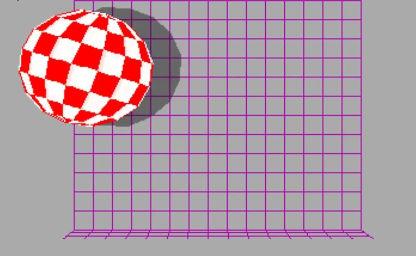
Exploring the Amiga - Part 8
Updated on
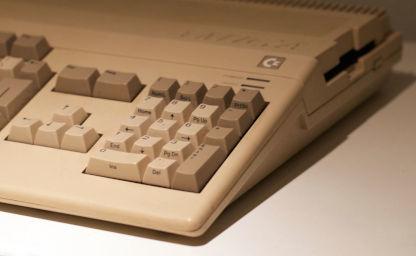
Exploring the Amiga - Part 7
Updated on

Exploring the Amiga - Part 6
Updated on
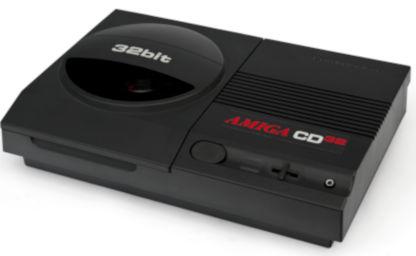
Exploring the Amiga - Part 5
Updated on
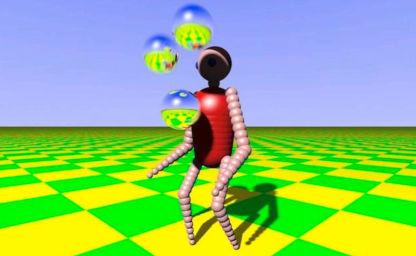
Exploring the Amiga - Part 4
Updated on
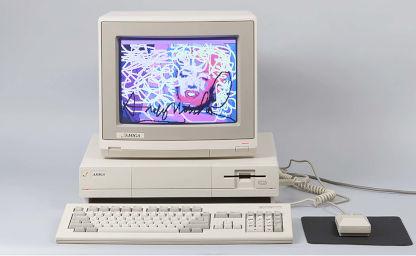
Exploring the Amiga - Part 2
Updated on
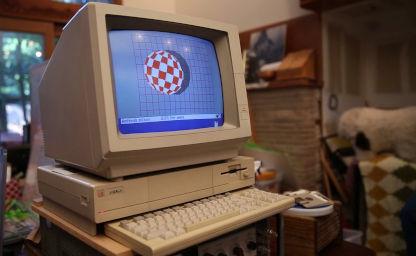
Exploring the Amiga - Part 1
Updated on
